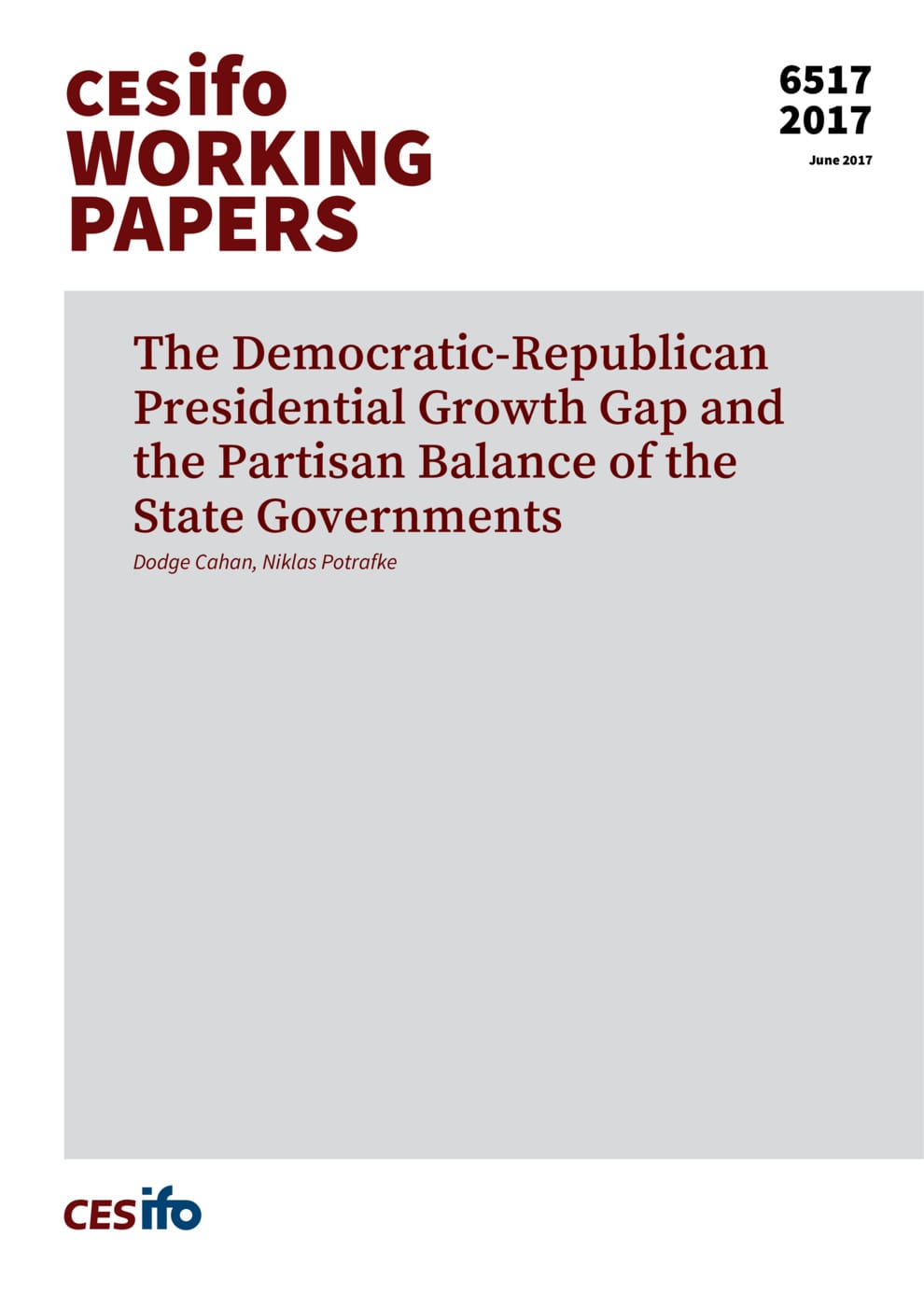The Democratic-Republican Presidential Growth Gap and the Partisan Balance of the State Governments
CESifo, Munich, 2017
CESifo Working Paper No. 6517

Higher economic growth was generated during Democratic presidencies compared to Republican presidencies in the United States. The question is why. Blinder and Watson (2016) explain that the Democratic-Republican presidential growth gap (D-R growth gap) can hardly be attributed to the policies under Democratic presidents, but Democratic presidents – at least partly – just had good luck, although a substantial gap remains unexplained. A natural place to look for an explanation is the partisan balance at the state level. We show that pronounced national GDP growth was generated when a larger share of US states had Democratic governors and unified Democratic state governments. However, this fact does not explain the D-R growth gap. To the contrary, given the tendency of electoral support at the state level to swing away from the party of the incumbent president, this works against the D-R growth gap. In fact, the D-R presidential growth gap at the national level might have been even larger were it not for the mitigating dynamics of state politics (by about 0.3-0.6 percentage points). These results suggest that the D-R growth gap is an even bigger puzzle than Blinder and Watson’s findings would suggest.
Public Choice
Fiscal Policy, Macroeconomics and Growth